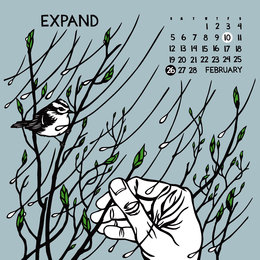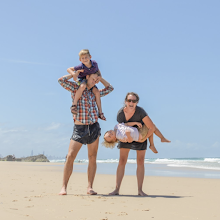Teaching Problem-Solving to Young Children
Over Spring Break, I read an awesome book called Children's Mathematics: Cognitively Guided Instruction. It's an approach to supporting children to strengthen their natural abilities to solve math word problems
In the context of a classroom, you present a problem to the group, give them time to solve it individually (with the option to use manipulatives if they need to model the problem for themselves), and then bring them back together to share various strategies children used (since there are many ways to solve a single problem).
The teacher doesn't actually teach anything. Instead, they simply choose problems in a very intentional way and then purposefully choose which children they want to share their strategies with the group.
We are doing action research around this approach at my school, so I've been trying it at home with Henry to prepare for our research work.
I make these cubes available as a manipulative. I intentionally use cubes that snap together so that he can eventually apply his knowledge of the base ten system by snapping them together, making ten rods, and then counting by ten.
I am in awe of the strong mathematical base he has built in his Montessori classroom the past three years (PK3, PK4, and kindergarten). We have done some problem-solving at home over the years ("After you wash the strawberries, will you count them and see how many each of us will get?"), but I am blown away by what he is able to do.
Today we did the 8th type: Part Part Whole - Part Unknown. The problem
was "There are 21 sour candies in a jar. 8 are pink and the rest are
green. How many green sour candies are in the jar?" I changed the candy
to sour patch kids because Henry loves those, and I changed the colors
to reflect the colors he had in his box of manipulatives. I thought this
might be the problem to stump him! It's so hard! Instead of getting
stumped, he reverted to a lower level of strategies. For many of the
previous problems, he was using the "counting on" strategy where he
wasn't using the manipulatives to model the problem. He was starting
with one set and then using his fingers to add the second set. However,
because of the difficulty of this problem, he had to resort to direct
modeling. The most interesting thing was that he had to resort to very
direct modeling. He used red cubes for the red candy and green cubes for
the green candy. Even though I did change the problem to reflect the
colors that he had in his box, I didn't mention to him that he might
want to model it that way. He did it on his own. CGI says that children
are natural problem-solvers, and it is so cool to watch it in action!
There are 14 different problem types, and you can increase the difficulty of each problem by adding digits to the numbers. Here are the 14 problems I'm systematically working through with Henry to see what he can do and what we should focus on next:
Problem Type
|
Pre (Grades K-1)
|
JRU
(Join Result Unknown)
|
_____ has 24 M&Ms. _____ gave him 7 more M&Ms. How many M&Ms does _____ have now?
|
PPW-WU
(Part Part Whole- Whole Unknown)
|
_____ had 18 fuzzy stickers. _____ had 6. How many fuzzy stickers do they have together?
|
SRU
(Separate Result Unknown)
|
_____ had 16 cupcakes. He gave 7 of them to his friends. How many cupcakes does he have now?
|
MULT
(Multiplication)
|
There are 9 muffins in a box. How many muffins are in 3 boxes?
|
PD
(Partitive Division)
|
_____ has 12 cookies. He puts the cookies in 3 bags with the same number in each bag. How many cookies are in each bag?
|
MD
(Measurement Division)
|
Ms. _____ bought 9 pencils. They are packed 3 pencils to a pack. How many packs of pencils did she buy?
|
CDU
(Compare Difference Unknown)
|
_____ has 13 erasers. _____ has 8 erasers. How many more erasers does _____ have than _____?
|
PPW-PU
(Part Part Whole - Part Unknown)
|
There are 21 sour candies in a jar. 8 are pink and the rest are green. How many green sour candies are in the jar?
|
JCU
(Join Change Unknown)
|
_____ has 9 toys. How many more toys does she need to have 21 toys altogether?
|
SCU
(Separate Change Unknown)
|
12 kids were at the playground. Some children went home. Now there are 4 kids left at the playground. How many children went home?
|
JSU
(Join Start Unknown)
|
_____ has some books. He buys 6 more books at a yard sale. Now he has 11 books. How many books did he have before?
|
SSU
(Separate Start Unknown)
|
There were cookies in a cookie jar. _____ took 7 of them. Now there are 15 left. How many cookies were in the jar to begin with?
|
CQU
(Compare Quantity Unknown)
|
_____ has 4 crayons and _____ has 7 more than _____. How many crayons does _____ have?
|
CRU
(Compare Reference Unknown)
|
A blue jar has 15 buttons. It has 4 more buttons than a red jar. How many buttons are in the red jar?
|















